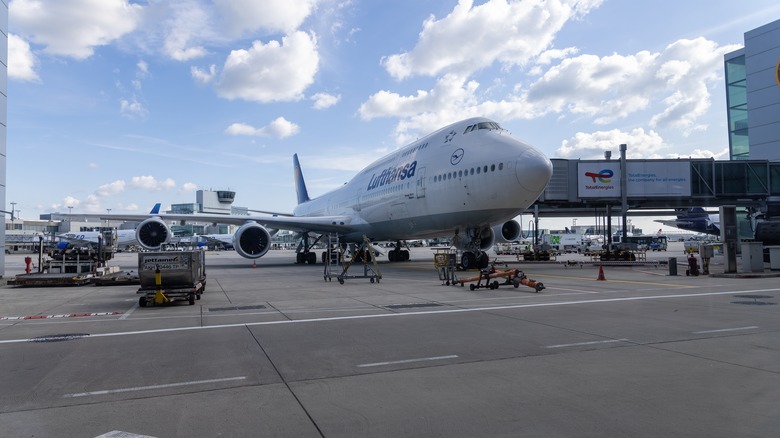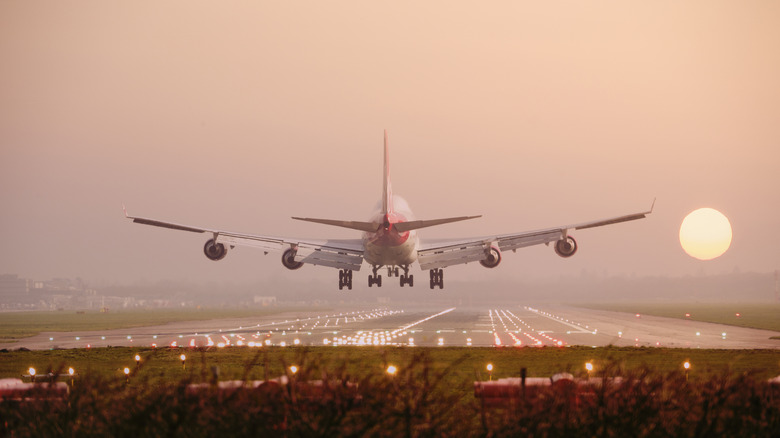
A.Freund/Shutterstock
There are times when you’re sitting in a best-in-the-sky Boeing 747 waiting on the tarmac, with nothing to do but watch another 747 in the distance get filled with fuel. A fueling truck slides up to the plane, connects one end of a giant fuel hose to the underground fuel manifold line, connects the other end to the refuel access panel under the wing, and then fills it up to the necessary levels. It’s certainly a reassuring sight, knowing the planes are about to travel 500 miles or so. And so one tends to wonder how much fuel a 747 takes.
Advertisement
It’s a bit more than can fit in your typical gas canister. Depending on the model, the average 747 can carry from 48,000 to 63,000 gallons, which, if you’re keeping track, is about 183,000 to 238,000 liters. The very first 747 launched in 1969 held 48,400 gallons of jet fuel, and as every subsequent model with increased ranges and capacity came out, that number naturally rose.
Where the fuel’s stored and how it’s burned

Travelpix Ltd/Getty Images
Most of that fuel is stored in the two main fuel tanks in the wings, which ultimately helps balance the plane during flight as the fuel symmetrically funnels down into each engine. If the fuel were all in one spot, that drink cart would probably tip pretty often. Along with the outer wing tanks, there’s also a central middle tank, though the storage configurations vary from model to model.
Advertisement
Naturally, in addition to storing tons of fuel, the 747 also burns plenty. Taken incrementally, the average 747 burns approximately 1 gallon every second, about 3,600 gallons an hour (at cruising altitude), and an average of about 5 gallons per mile. While that may not seem like a fuel efficiency percentage for the books, it’s still an admirable effort, considering that if the plane is burning 100 miles per gallon of fuel for a load of 500 passengers, each of whom is moving through the sky at upwards of 550 miles per hour. Knowing this won’t make a long flight go any faster, but it helps justify flying instead of driving. Not to mention, the impressive fuel load of the 747-8 helped make it a pick for Air Force One.
Advertisement